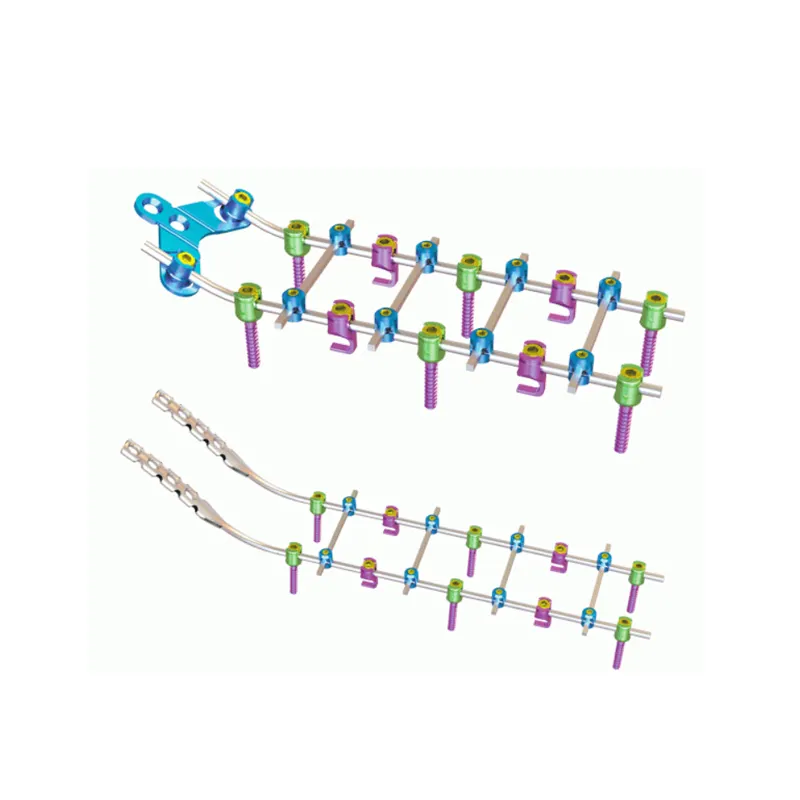Understanding Surgical Approaches for Different Regions of the Spine
Spinal surgery represents one of the most intricate and specialized fields in modern medicine. While both cervical and lumbar spinal surgery aim to alleviate pain and restore function, they involve distinct approaches, techniques, and considerations due to the unique anatomy and biomechanics of these spinal regions. Medical advances have revolutionized how surgeons approach these delicate procedures, offering patients more precise and less invasive options for treating various spinal conditions.
Anatomical Distinctions and Surgical Implications
Cervical Spine Characteristics
The cervical spine, located in the neck region, consists of seven vertebrae responsible for supporting head movement and protecting vital neural structures. This area's mobility and proximity to crucial structures like the brain stem and major blood vessels make cervical spinal surgery particularly demanding. Surgeons must navigate around these sensitive areas while addressing conditions such as herniated discs, stenosis, or cervical myelopathy.
The surgical approach to the cervical spine often requires extreme precision, as the margin for error is minimal. The vertebrae in this region are smaller and more delicate compared to other spinal segments, necessitating specialized surgical techniques and instruments.
Lumbar Spine Anatomy
The lumbar spine, situated in the lower back, comprises five large vertebrae designed to bear significant body weight and facilitate trunk movement. These vertebrae are substantially larger and more robust than their cervical counterparts, allowing for different surgical approaches. The lumbar region commonly experiences issues like disc herniation, spinal stenosis, and spondylolisthesis, each requiring specific surgical interventions.
Surgical access to the lumbar spine often involves navigating through thicker muscle layers, but the larger vertebral size provides more room for surgical manipulation. This anatomical characteristic influences both the surgical approach and recovery process.
Surgical Techniques and Approaches
Cervical Surgery Methods
Cervical spinal surgery frequently employs anterior approaches, accessing the spine through the front of the neck. This technique, known as anterior cervical discectomy and fusion (ACDF), allows surgeons to avoid disrupting the spinal cord while addressing disc problems. Minimally invasive techniques have revolutionized cervical procedures, reducing tissue trauma and expediting recovery.
Posterior cervical approaches may also be necessary for certain conditions, particularly when addressing multiple levels or when decompression of nerve roots is required. These procedures demand careful consideration of the surrounding musculature and neural structures.
Lumbar Surgical Procedures
Lumbar spinal surgery typically involves posterior approaches, accessing the spine through the back. Common procedures include lumbar microdiscectomy, laminectomy, and spinal fusion. The robust nature of lumbar vertebrae allows for more aggressive decompression when necessary, though surgeons must still exercise caution to protect nerve roots.
Minimally invasive techniques have particularly benefited lumbar procedures, allowing for smaller incisions and reduced muscle trauma. These advances have significantly improved recovery times and surgical outcomes for many patients.

Recovery and Rehabilitation Differences
Cervical Recovery Process
Recovery from cervical spinal surgery often progresses more rapidly than lumbar procedures, partly due to the smaller surgical area and less muscle disruption. However, patients must follow strict protocols regarding neck movement and positioning during the initial recovery phase. Physical therapy typically focuses on gentle neck exercises and proper posture maintenance.
Most patients require a cervical collar for several weeks post-surgery to stabilize the spine and promote proper healing. Return to daily activities usually occurs gradually over 4-6 weeks, though complete fusion may take several months.
Lumbar Recovery Timeline
Lumbar spinal surgery recovery often involves a longer initial period of restricted movement due to the spine's weight-bearing role. Physical therapy emphasizes core strengthening and proper body mechanics. Patients typically need more time to return to normal activities, particularly those involving bending or lifting.
The recovery timeline can extend from 6-12 weeks for basic activities, with complete healing and return to strenuous activities taking up to several months. Pain management and graduated activity progression play crucial roles in successful rehabilitation.
Long-term Outcomes and Considerations
Cervical Surgery Success Rates
Modern cervical spinal surgery boasts high success rates, particularly for well-defined conditions like herniated discs or stenosis. Patients often experience significant improvement in arm pain and neurological symptoms. The maintenance of neck mobility depends on the specific procedure performed and the number of vertebral levels involved.
Long-term outcomes generally show sustainable improvement, though adjacent segment disease may develop over time, potentially requiring additional intervention. Regular follow-up and maintenance of proper neck biomechanics contribute to lasting success.
Lumbar Surgery Outcomes
Lumbar spinal surgery outcomes vary more widely due to the complex nature of lower back conditions and the spine's weight-bearing function. Success rates remain good for specific conditions, particularly when patient selection and surgical timing are optimal. The key to long-term success often lies in maintaining proper body mechanics and core strength.
Patient compliance with post-operative care and lifestyle modifications significantly influences long-term outcomes. Regular exercise, weight management, and proper lifting techniques help maintain surgical benefits and prevent future problems.
Frequently Asked Questions
How long is the hospital stay for cervical versus lumbar spinal surgery?
Cervical spinal surgery typically requires 1-2 days of hospitalization for uncomplicated procedures, while lumbar surgeries may require 2-4 days, depending on the procedure's complexity and the patient's recovery progress.
Which type of spinal surgery has a higher risk of complications?
Both procedures carry specific risks, but cervical surgery generally has higher stakes due to proximity to vital structures. However, modern surgical techniques and technology have significantly reduced complication rates for both types.
When can patients return to work after spinal surgery?
Return-to-work timing varies significantly based on job requirements and surgery type. Cervical surgery patients often return to light duty within 4-6 weeks, while lumbar surgery patients typically require 6-12 weeks, particularly for physically demanding jobs.
 EN
EN
 FR
FR
 ES
ES
 AR
AR

